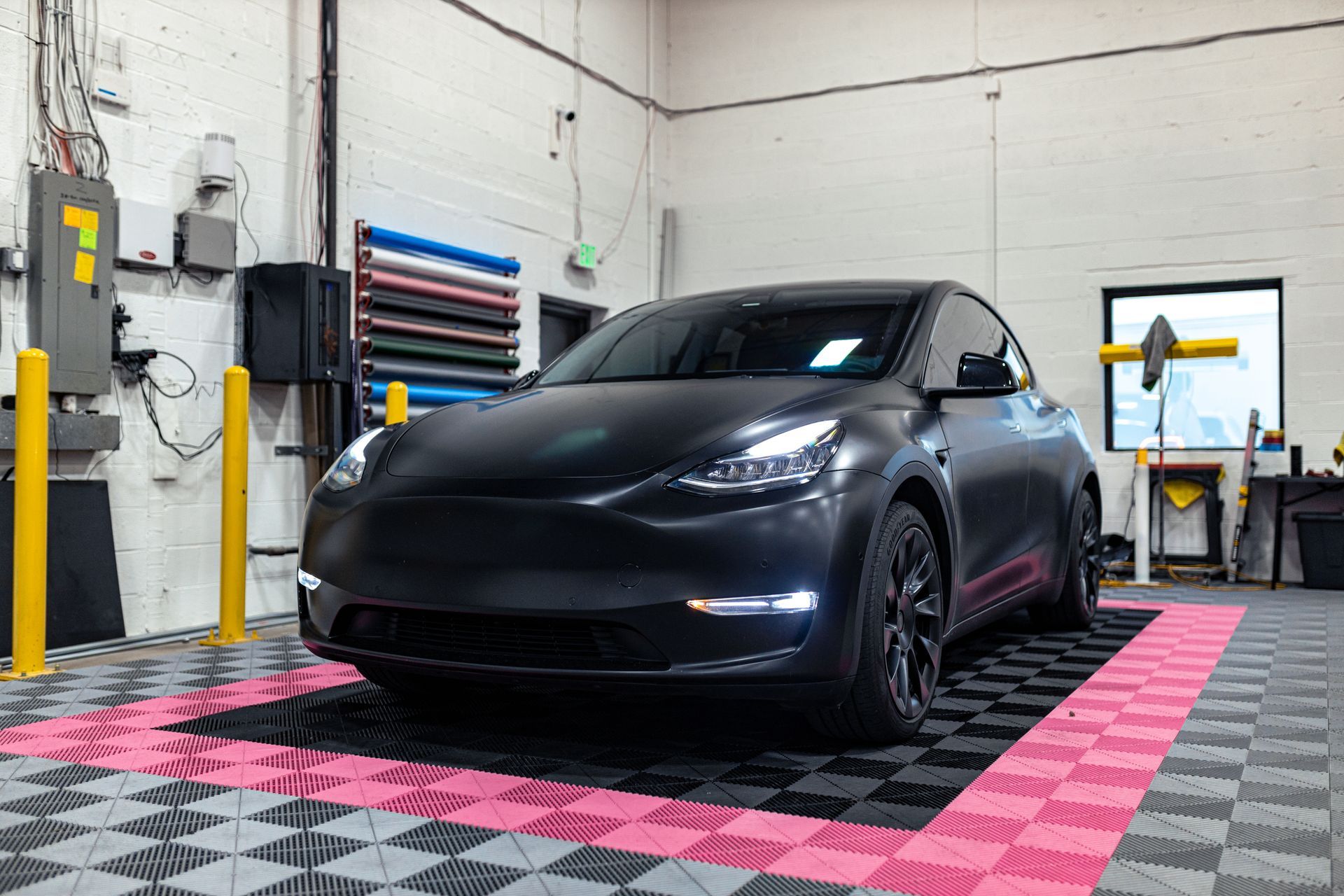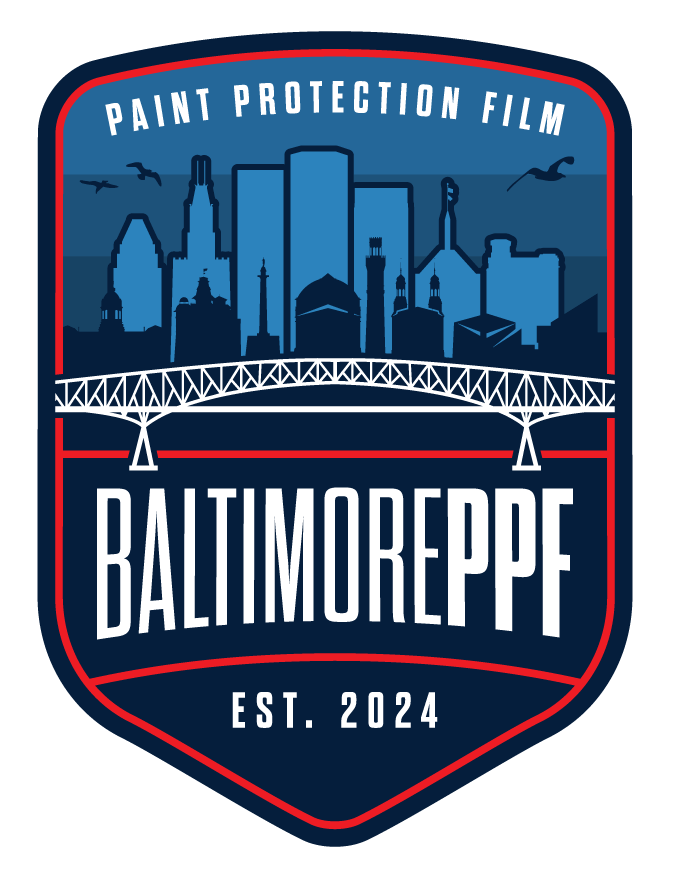Protect Your Car: How Paint Protection Film Works
Have you ever noticed how water seems to effortlessly slide off a newly waxed car? This effect can be long-lasting with the application of paint protection film on your vehicle. In this post, we'll delve into how this shield guards your car's paint against scratches and environmental damage, the benefits of using the film, and methods for installation and maintenance. By reading on, you'll discover how to extend the life of your car's exterior, boost its resale value, and keep it looking pristine. Whether you're contemplating professional service or a DIY approach, akin to applying a screen protector with a credit card, this article promises to guide you through protecting your investment.
Understanding How Paint Protection Film Shields Your Car
As a car enthusiast, I've explored various methods to safeguard vehicle exteriors, and paint protection film (PPF) stands out for its effectiveness. This remarkable shield can resist heat, much like certain window films, providing a robust coat over your car's paint. In upcoming discussions, we'll delve into the science that empowers PPF to prevent paint damage, understanding its composition, and the added benefits of warranties and newer ceramic-infused options. We'll aim to equip you with knowledge so you can make an informed decision about protecting your investment.
Learn the Science Behind Paint Protection Films
In my experience working with vehicle preservation, the automotive industry has been revolutionized by the technology behind paint protection film. This innovative material is a durable, transparent layer that attaches seamlessly to the surface of your car—from the bumper to the trunk—guarding against scratches, chips, and environmental contaminants. Unlike traditional coatings, the advanced polymers in PPF not only shield your truck from the inevitable wear and tear but also offer self-healing properties, which restructure on a microscopic level to maintain a pristine finish, even after a brush with bird droppings or a runaway shopping cart.
Understanding the role of advanced chemistry in PPF has helped me ensure the longevity of my vehicle's appearance. Beneath its unassuming surface, PPF is engineered with high-grade urethane, a substance renowned for its outstanding elasticity and strength, which is paramount in protecting the paint from assorted damages. Required frequency of maintenance is thus greatly reduced, granting peace of mind and time saved on cosmetic repairs. I've seen first-hand how cars treated with PPF maintain a more polished, showroom-quality exterior, providing significant benefits for both daily drivers and car enthusiasts alike.
Discover How PPF Prevents Damage to Vehicle Paint
My experience with paint protection film has taught me that its adhesive quality plays a crucial role in warding off damage from road debris. Once applied, the adhesive securely bonds the film to your car's paint, creating a sturdy barrier. This layer acts like a buffer, taking the hit from stones, gravel, and even salt that can pit or scratch the surface. Brands have harnessed this innovation to maintain the gloss of your car's exterior, which is especially important for those who take pride in their vehicle's appearance.
Another aspect of PPF that I've found noteworthy is its ability to absorb impacts. During my time applying the film, I've noticed how it disperses the force from, say, a pebble thrown up by another car on the highway, minimizing the risk of a chip in the paint. It's these practical insights that lead me to appreciate the nuanced innovation behind paint protection technology; it offers drivers tangible benefits by preserving the car's gloss and integrity against everyday wear and tear.

Benefits of Applying Paint Protection Film to Your Vehicle
Applying polyurethane paint protection film to your car is an investment in maintaining its aesthetic appeal and structural integrity. Through my expertise, I've seen how the robust layer shields the exterior from scratches and chips, preserving your car's finish with a level of resilience that everyday driving demands. Furthermore, vehicles enveloped with this durable barrier often experience enhanced resale values, with exteriors that stay pristine over time. I'll take you through the advantages of using the correct squeegee techniques for application, how paint protection film resists stains, and the longevity added to your vehicle's carbon composite materials. Gift card recipients often enjoy the option to safeguard their cars with PPF, expressing gratitude for the extended luster and protection it provides.
Preserve Your Car's Finish From Scratches and Chips
My own vehicle has benefitted greatly from paint protection film, particularly in maintaining a flawless finish free from the dreaded "orange peel" effect that plagues so many cars. Even when faced with harsh elements like road salt and contamination, the film acts as an unyielding guardian. Thanks to this transparent armor, my car's paint remains untarnished, showing neither a ripple nor a blemish, a symbol of the film's prowess at preserving both beauty and value.
In my professional experience, I've applied PPF to a range of vehicles and noted its remarkable ability to repel the tiny, abrasive particles that can erode your car's paint over time. This resilient shield not only protects from scratches and chips but also from contaminations that can mar the surface, almost like how a well-designed javascript menu streamlines the user experience — smooth, efficient, and reliable. For those who treasure their vehicle's aesthetic, the practical benefits of paint protection film are undeniable.
Enhance Resale Value With a Protected Exterior
In my professional dealings, I have consistently noticed that cars protected with paint protection film appeal more to prospective buyers in New Jersey's competitive market. This is because the high-quality urethane film diligently guards against corrosion and debris, ensuring that the vehicle's exterior remains in pristine condition—a significant selling point. The intact and untarnished finish can then be leveraged in negotiations, potentially increasing the car's resale value and offering credit to the owner's diligent maintenance.
Additionally, the durability of this film, a product of meticulous manufacturing, means that the beauty of the vehicle is preserved even in the face of harsh environmental challenges. I have seen numerous cars maintain their showroom luster over years of use, which stands out to buyers. For any car owner looking to secure a better return on investment upon sale, applying paint protection film is a smart, proactive measure that economically benefits both their pocketbook and the car's longevity.
Choosing the Right Paint Protection Film for Your Needs
Choosing the right paint protection film is akin to selecting the best armor for your car: it requires careful consideration of all options. In California's bustling roads, where motorcycles zip past and gravel threatens your vehicle's gleam, the differences between PPF types—such as their thickness and clarity—become significant. When I consider the distinct attributes of each film, I contemplate how they'll endure against the rigorous demands of everyday cleaning agents and how they'll preserve the delicate surfaces like mirrors. Up next, we'll compare the various types of films available and discuss the critical factors you should consider to ensure your car remains shielded from wear and tear.
Compare Different Types of Paint Protection Films
When selecting a paint protection film, I consider factors such as durability and finish. The "film xpel" and "ppf suntek" options provide robust protection with a clear, glossy look that impeccably maintains the aesthetic of the vehicle. From my technical experience, I find that Xpel's self-healing technology is excellent for areas prone to scratches while Suntek's hydrophobic features offer outstanding stain resistance, critical for keeping your car looking new after installation.
In my work with "ppf protec" and standard "auto bra" products, the difference in installation techniques is apparent. "Installation ppf" requires meticulous precision, and ProTec stands out for its easy application and longer lifespan which translates to fewer replacements over time. Each type of film has its unique attributes, so I always advise considering the specific needs of your vehicle and the environment it encounters most when choosing between protection films.
Consider Factors Like Thickness and Clarity
When I explore options like film protection 3M for clients aiming to preserve their car's appearance, the thickness and clarity of the protection film are always top concerns. A thicker film offers superior shield against rocks flung from the wheels or detritus kicked up on the road, but it must remain crystal-clear to not obscure the paint's luster. In assessing these films, it's crucial to balance durability without compromising the sleek, untouched look of the windshield and bodywork many owners desire.
In my consultations, I often advise that while a thicker film may safeguard better against dust and scratches, it should not noticeably alter the vehicle's appearance. This holds especially true for clients who participate in car shows, where even a slight distortion from a protection film could detract from the car's overall aesthetic. My experience has shown that investing in a high-quality film that combines robust protection with optical clarity is integral for maintaining both the integrity and beauty of the car, from windshield to wheels.
Installing Paint Protection Film: A Step-by-Step Guide
Installation of paint protection film is a meticulous process that begins with properly preparing your car's surface. I ensure every inch of the glass, automotive paint, and particularly the hood, is pristine to guarantee a flawless application. You'll learn how to smoothly apply the film without entrapping air bubbles and how to finish the installation impeccably while checking for any imperfections. With my guidance, you're about to master the art of protecting your vehicle’s exterior, bolstering its defense against the rigors of the road.
Prepare Your Car's Surface for Application
Ensuring that your car's surface is immaculate is the first critical step in applying paint protection film. I meticulously wash and decontaminate the car's exterior, paying close attention to remove any wax or sealant that could compromise the film's adhesion. It's imperative that the car is completely dry and free of any residues—this foundation is essential for a successful application.
After cleaning, I closely inspect the surface for any imperfections that may need to be addressed before the film application. This includes minor scratches or dings which can be corrected with a gentle polishing process. It's this attention to detail and preparation that leads to an exceptional finish, allowing the protection film to bond flawlessly and provide the optimal shield for your car's paintwork.
Apply the Film Smoothly Without Bubbles
Applying paint protection film can be challenging; achieving a bubble-free finish is one of the aspects I focus intently upon. I use a squeegee to firmly, yet carefully smooth out the film from the center towards the edges, ensuring that air bubbles are expelled and the film adheres evenly. This process, vital for optimal protection, simultaneously maintains the seamless aesthetic of your vehicle's exterior.
Having installed paint protection films on numerous vehicles, I can attest that patience and precision during installation are key to a flawless outcome. It is important to stay vigilant, constantly checking for and eliminating any creases or air pockets. A meticulously applied film not only serves as a robust protective layer but also enhances the overall look of your car by preserving the paint's vividness and sheen.
Finish Installation and Inspect for Imperfections
After painstakingly smoothing out the paint protection film across the surface of your car, the final step I employ involves a thorough inspection to ensure there are no imperfections. Even the smallest flaw or trapped speck of dust beneath the film can undermine the integrity of the protection, so I meticulously review every inch, making the necessary adjustments to perfect the installation.
In the course of finalizing the film application, I've learned how important it is to step back and examine the work from various angles and lighting conditions. This practice has proven invaluable, as it allows me to catch any indiscernible bubbles or minute inconsistencies that could compromise the seamless appearance and protective qualities the film is meant to provide.
Professional Installation Versus DIY Paint Protection Film
Deciding between professional installation and a DIY approach for paint protection film is a critical step for car owners. Considering hiring a professional means assessing their expertise against the potential savings of a self-managed application. We will explore the pros and cons, including cost implications, of each method. This evaluation is key to ensuring the most cost-effective and reliable protection for your vehicle, striking the perfect balance between quality and budget.
Weigh the Pros and Cons of Hiring a Professional
In my experience, opting for a professional to install your car's paint protection film often ensures a higher standard of quality and durability. Professionals are equipped with the expertise and precision instruments required to execute a flawless application, significantly reducing the risk of bubbles, wrinkles, or misalignments that can occur during a self-application. Their familiarity with complex car contours ensures the PPF adheres perfectly to every curve and edge, making the investment worthwhile when it comes to safeguarding the vehicle’s value and appearance.
However, I'm also conscious that for many car owners, cost is a significant consideration, and a DIY approach to paint protection film installation can be tempting to save on labor expenses. While there is an abundance of tutorials available, it's important to be aware that incorrect application can lead to costly mistakes, such as damaged paintwork due to improper film removal or exposure of the car paint to elements due to an ineffectively applied barrier. Balancing the potential savings against the possibility of substandard protection or the need for reapplication is essential when determining the best route to take for your paint protection needs.
Assess the Costs of Professional Versus DIY Methods
In my line of work, I've consistently observed that professional installation of paint protection film, while initially more costly, can lead to long-term savings. This stems from the expertise that professionals bring to the table—they're skilled in proper film handling, which minimizes waste, and they possess the precision necessary to ensure a flawless fit, preventing the need for early replacements. Car owners should consider these factors when comparing the upfront costs with the longevity and quality assurance that professional services offer.
On the other hand, choosing a do-it-yourself approach for installing paint protection film can seem financially appealing due to the absence of labor costs. However, I have seen instances where the DIY route has resulted in subpar protection, necessitating a reinstallation by experts and thus incurring additional expenses. When assessing costs, it's crucial for car owners to weigh not just the price of the film, but also the value of a correctly applied protection that stands the test of time against potential damages incurred through self-application.
Maintaining Your Paint Protection Film for Longevity
Maintaining the longevity of paint protection film on your car requires meticulous care. I'll guide you on how to clean the film correctly to avoid damaging its integrity. Equally, I'll offer insight on regularly inspecting the film for any signs of wear or peeling. These practices are essential to extend the life of the film and keep your vehicle's exterior in top-notch condition.
Clean the Film Correctly to Prevent Damage
From my personal experience in vehicle care, maintaining paint protection film (PPF) is critical to its effectiveness. To prevent damage, I've learned that the film must be cleaned with the correct tools and solutions—avoiding harsh chemicals and abrasive sponges that can degrade the film's surface. It’s vital to use a plush microfiber towel and a pH-neutral, PPF-safe cleaner to keep the film in top condition without compromising its protective qualities.
When dealing with tougher contaminants, my approach involves soaking the area gently with warm water and a mild soap solution to loosen the grime before attempting removal. Vigorous scrubbing is to be avoided; instead, I recommend a gentle wipe to lift dirt and debris. This ensures the film's integrity isn't compromised, maintaining its excellent protective capability over your car's paintwork for the long haul.
Regularly Check for Signs of Wear or Peeling
In my diligent maintenance practices, I've found that regular inspections of the paint protection film are crucial for spotting early signs of wear or peeling. These checks should be part of your routine car care, as catching and addressing these issues promptly can prevent further damage to the car's exterior and maintain the film's functionality.
I encourage car owners to be vigilant, especially along the edges of the film, as these areas are most susceptible to lifting and eventual peeling. If I notice any lifting, I recommend visiting a professional for repairs to ensure the integrity of the paint protection film, thereby extending its lifespan and preserving the vehicle's pristine appearance.
Frequently Asked Questions
How does paint protection film actually protect a car's surface?
Paint protection film acts as a barrier, safeguarding a car's paint from scratches, chips, and UV exposure, thus maintaining the vehicle's aesthetic appeal and resale value.
What are the primary advantages of using paint protection film on my car?
Paint protection film offers a car's exterior robust defense against scratches, weathering, and stains, maintaining its aesthetic and resale value for longer periods.
How do I select the best paint protection film for my car?
When selecting the best paint protection film for your vehicle, prioritize thickness for durability, clarity to preserve your car's shine, and a reputable brand known for resilience against scratches and stains.
Can you provide a basic guide for installing paint protection film?
Installing paint protection film involves cleaning the surface, measuring the film, cutting to fit, applying a slip solution, positioning the film, and using a squeegee to remove bubbles for a smooth finish.
Should I install paint protection film myself or hire a professional?
Installing paint protection film requires precision and skill; hiring a professional ensures proper application and minimizes the risk of costly mistakes that can occur with DIY attempts.
Conclusion
Paint protection film offers an invisible yet powerful defense, preserving your vehicle's paint job from scratches, chips, and elemental damage. Carefully chosen and expertly applied, this durable urethane film can significantly enhance your car's resale value by maintaining its aesthetic appeal. A professional application is advisable over DIY methods, to ensure a flawless finish and avoid costly mistakes. Regular maintenance and inspections of the film safeguard its longevity, ensuring continuous protection for your car's exterior.

The body content of your post goes here. To edit this text, click on it and delete this default text and start typing your own or paste your own from a different source.

Baltimore PPF stands as a premier service provider dedicated to offering cutting-edge protection solutions for a wide range of vehicles. Known for our expert application of paint protection film and ceramic coatings, Baltimore PPF ensures optimal defense against physical damage, environmental contaminants, and harsh road and water conditions. In addition, our specialized services cater to high-end models like Tesla and Corvette, with meticulous attention to detail and precision. Baltimore PPF prioritizes customer satisfaction by expertly blending cutting-edge materials and techniques. Our mission is to provide top-notch, seamless protection that safeguards the beauty and structural strength of your valuable assets. j
CALL (410) 621-9227
Get a Quote
Contact Info
8967 Yellow Brick Rd, Rosedale, MD 21237, United States of America
Hours of operation
Monday - Friday
9:00 a.m. - 5:30 p.m.
Designed by the team at Detailers Roadmap, a platform developed for detailing operators across the globe.
All Rights Reserved | 8bitcreative, LLC | Baltimore PPF

